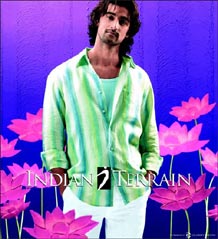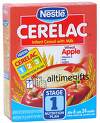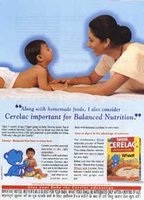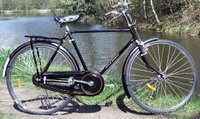Company: Aditya Birla Nuvo
Agency:Contract
Brand Count : 179
If you want to know how to create a brand, Study this brand. Louis Philippe can be termed as a brand which has an iconic status in India. The brand was launched in 1989 and it  created the super premium segment in the Rs 5000 crore men's readymade category.The brand originally belonged to Madura garments and was later acquired by Indian Rayons ( now Aditya Birla Nuvo)
created the super premium segment in the Rs 5000 crore men's readymade category.The brand originally belonged to Madura garments and was later acquired by Indian Rayons ( now Aditya Birla Nuvo)
The brand has satisfied all requisite parameters for a successful brand. The brand element, the segmentation, positioning and the promotions were perfect. The brand when launched had a clear vision. The launch coincided with the liberalisation although the later played minimum role in the brand's success. Louis Philippe was obsessed with quality from its birth itself.The brand used the finest cloth and the craftsmanship was exquisite. The brand is the first to launch international fashion trends in the Indian market.
The brand is known for its craftsmanship and attention to detail. The brand has a life that beats the other brands by miles. Those ardent fans of Louis Philippe will vouch for the life of the shirt. After repeated washes, seldom this shirt lets you down.It is this value that had captured the minds of the Indian consumer.
Louis Ph ilippe was positioned as an aspirational brand. The brand element, Crest has now become a symbol of success. You wear the shirt with the upper crest, you make a statement of being well dressed. Seldom brands achieve that status.
ilippe was positioned as an aspirational brand. The brand element, Crest has now become a symbol of success. You wear the shirt with the upper crest, you make a statement of being well dressed. Seldom brands achieve that status.
The brand initially positioned as "Signed Designer wear" later extended the positioning to create a sense of exclusivity. The brand became the symbol of being " Arrived". The premium pricing and the exclusive Brand element reinforced the premium image of this brand.
Louis Philippe also made sure that it offer maximum value for the premium it charges. The brand uses only Suvin, Egyptian or Pima Cotton. The brand is also the first to launch iconic collections. The Black and White Collections (1996) and the super premium Gods and Kings (2003 ) ensured that the fans are excited about the brand. Gods and Kings range is priced 100% premium over the other premium brands.Another blockbuster product from the brand's stable was the PermaPress range of 100% wrinkle free shirts which became a huge hit with the executives.
which became a huge hit with the executives.
 created the super premium segment in the Rs 5000 crore men's readymade category.The brand originally belonged to Madura garments and was later acquired by Indian Rayons ( now Aditya Birla Nuvo)
created the super premium segment in the Rs 5000 crore men's readymade category.The brand originally belonged to Madura garments and was later acquired by Indian Rayons ( now Aditya Birla Nuvo)The brand has satisfied all requisite parameters for a successful brand. The brand element, the segmentation, positioning and the promotions were perfect. The brand when launched had a clear vision. The launch coincided with the liberalisation although the later played minimum role in the brand's success. Louis Philippe was obsessed with quality from its birth itself.The brand used the finest cloth and the craftsmanship was exquisite. The brand is the first to launch international fashion trends in the Indian market.
The brand is known for its craftsmanship and attention to detail. The brand has a life that beats the other brands by miles. Those ardent fans of Louis Philippe will vouch for the life of the shirt. After repeated washes, seldom this shirt lets you down.It is this value that had captured the minds of the Indian consumer.
Louis Ph
 ilippe was positioned as an aspirational brand. The brand element, Crest has now become a symbol of success. You wear the shirt with the upper crest, you make a statement of being well dressed. Seldom brands achieve that status.
ilippe was positioned as an aspirational brand. The brand element, Crest has now become a symbol of success. You wear the shirt with the upper crest, you make a statement of being well dressed. Seldom brands achieve that status.The brand initially positioned as "Signed Designer wear" later extended the positioning to create a sense of exclusivity. The brand became the symbol of being " Arrived". The premium pricing and the exclusive Brand element reinforced the premium image of this brand.
Louis Philippe also made sure that it offer maximum value for the premium it charges. The brand uses only Suvin, Egyptian or Pima Cotton. The brand is also the first to launch iconic collections. The Black and White Collections (1996) and the super premium Gods and Kings (2003 ) ensured that the fans are excited about the brand. Gods and Kings range is priced 100% premium over the other premium brands.Another blockbuster product from the brand's stable was the PermaPress range of 100% wrinkle free shirts
 which became a huge hit with the executives.
which became a huge hit with the executives.The brand primarily relies on print ads in magazines for promotions .The first ever TVC was created in 2000 carried the message that the brand is unreachable for " lesser ones". The print ads were carefully drafted and in all the ads, the brand was the star and not the models. Initially the brand was primarily known as the shirt brand but later it easily extended itself to become a complete menswear brand. The brand faces tough competition from the likes of Van Heusen, Colorplus, Park Avenue, Zodiac ,Reid and Taylor and the list goes on. The future for this brand will depend on how it will stay afloat in the increasingly crowded market. Readymade markets have little entry barriers. Any marketer can enter this market with a brand. This can create issues such as sustaining the differentiation and staying in the minds of the customer.
Related Brands
Zodiac
Indian Terrain
Colorplus
Monte Carlo
John Players
Peter England
Reid and Taylor
Source: Superbrands,adityabirlanuvo.com,agencyfaqs
image courtsey: Superbrands,agencyfaqs









